What to plant in July: 12 beautiful flowers to sow and grow this month
Our guide on what to plant in July will help you grow gorgeous blooms this season

Ruth Hayes

Knowing what to plant in July is handy for any garden lover. Many flowers reach their prime this month – if you've been growing for a while, your plot is likely to be bursting with blooms. But as you'll know, it's never worth resting on your laurels (not for too long anyway). With gardening, it's always good to think ahead.
The best advice for this month is that if possible, limit yourself to starting plants from seed. July is (or should be) the hottest, driest month of the year, so if you decide to plant large perennials to fill gaps, be prepared to water regularly. Even plants that suit dry conditions will initially struggle after planting if they are not watered enough.
This is why it is not a good month for planting trees, shrubs or woody plants such as roses – they are less likely to establish and thrive in hot, dry conditions and you will be using water that can be put to much better use elsewhere in the garden.
If you want to finalize what to plant when this month, concentrate on sowing hardy perennials that will grace your garden for years to come, and biennials that will start to grow this year before putting on a colorful show next. It’s also worth scattering some quick growing annual seeds too, for late color as the summer moves towards fall.
Boost your blooms with our list of what to plant in July
Choosing what to plant in July can get a little overwhelming – there are so many options to pick from for your flower bed ideas. So, to give you a helping hand, we've rounded up our top flowers to get sowing and growing this month.
You'll find plenty of expert tips too, to ensure your garden planter ideas and borders put on a show-stopping display.
1. Hardy annuals

There is still time to sow hardy annual flowers to fill any color gaps that appear between now and the first frosts.
Sunny calendulas, cornflowers, poppies and clary are just some of the annuals that will pop up if sown now. Ornamental annual grasses such as quaking grass is another good choice as it helps break up the riot of color in the summer garden.
These seeds are so easy to start – simply clear the weeds and stones from a sunny patch of soil, give it a good watering, then scatter the seeds and cover them with more soil.
Gently firm the seedbed with the back of a rake, add a label so you know where not to treat and spray pepper dust on the ground to prevent cats using the site as a litter tray.
When your annuals have flowered, don’t be too hasty to pull them up. Let the seedheads ripen and either collect their contents or let them spread themselves around.
2. Hardy geraniums
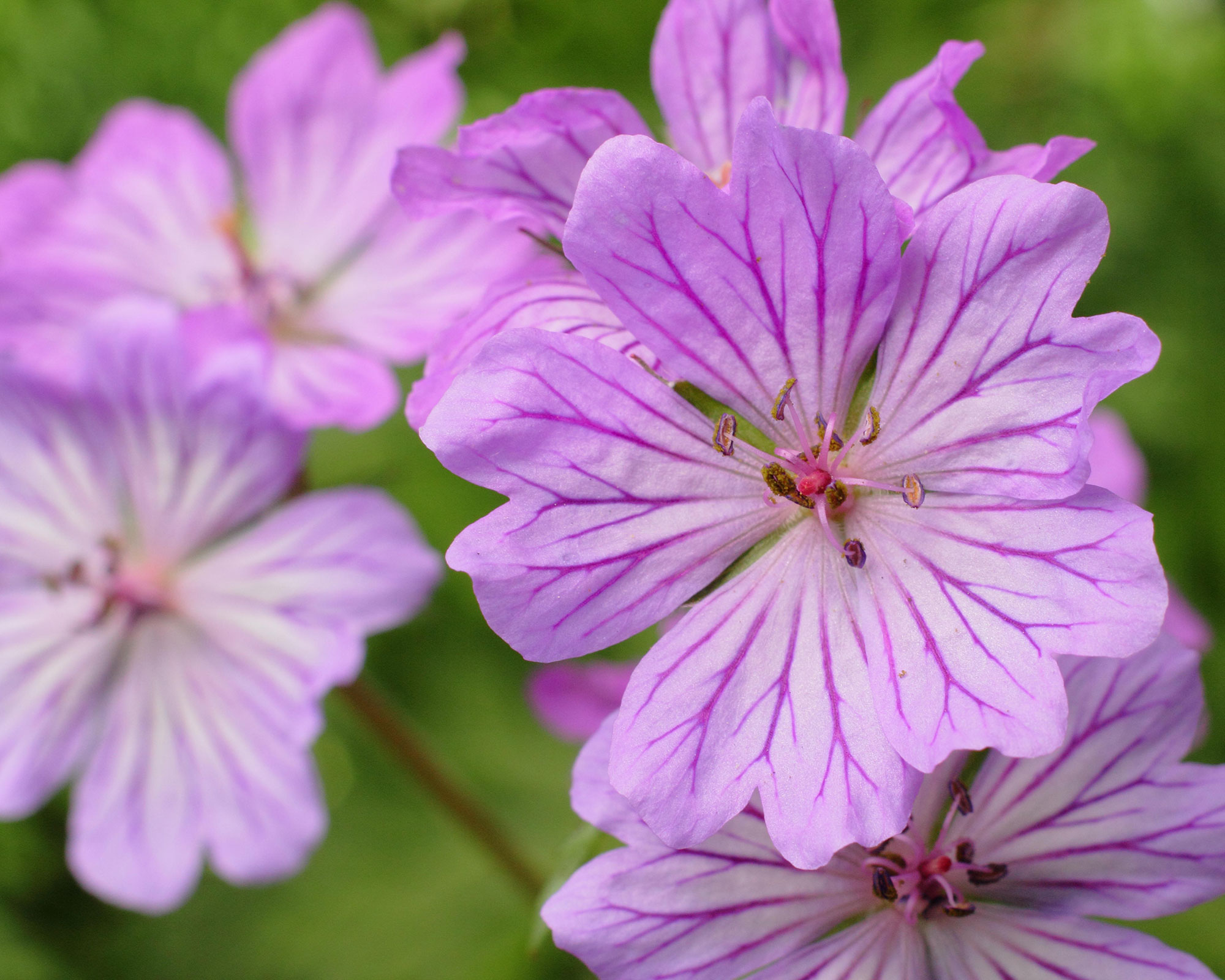
There are many reasons why hardy geraniums, or cranesbill geranium, are one of the must-have plants for any garden. They are easy to grow, happy in most soils and situations, make excellent weed-suppressing ground cover plants and if you give them a trim in early summer after their first flowering they will reward you with more blooms in late summer and fall.
Seeds are widely available to buy and you can also collect them from your existing plants once the pods have ripened.
Scatter the seeds thinly over trays of dampened seed compost, cover them with a little more compost or vermiculite, cover the tray with a lid and place it in an unheated greenhouse cold frame or on a light, cool windowsill.
Remove the lid when the seedlings germinate and grow them until they are large enough to be moved into individual pots of multi-purpose compost. Plant them out in autumn and they will flower next year.
Hardy geraniums self-seed generously so you may find ‘rogue’ plants popping up around your garden that can be moved to more suitable positions where you would like them to grow.
3. Sweet rocket

Sweet rocket is a biennial that is often shockingly overlooked as an option for what to plant in July, considering just how much it brings to the garden.
A tall, bushy plant that produces purple flowers in every shade, from deepest purple through to pale mauve, as well as white, it also produces the sweetest perfume, especially in the evening.
Scatter the seeds in an informal arrangement over a patch of sunny, or partially shaded, soil, then cover them and water them in. The leaves will start to appear this year and the plants will flower beautifully next.
Deadhead the first flush of flower spikes to encourage more blooms throughout summer. You can also leave some of the flowerheads in place to ripen and scatter seeds elsewhere in your garden.
4. Iceland poppies

Iceland poppies are a short-lived but beautiful perennial that are worth sowing every summer for a continual show of blooms. They flower in fiery shades and are extremely hardy, tolerating the cold though heavy, waterlogged soil types may cause plants to rot.
They like a sunny site and flower in late spring and early summer, their red, yellow, orange and white flowers adding some zing to the usual purple and blue pastels colors of that time of year.
Scatter the seeds onto pots or trays of dampened seed compost and germinate on a light windowsill out of direct sunlight.
The seeds are tiny and need light for germination, so don't cover them with compost as you do with most other seeds.
You can either plant the seedlings out in the fall when they are large enough, or grow them in an unheated greenhouse or cold frame before planting out next spring.
5. Penstemons
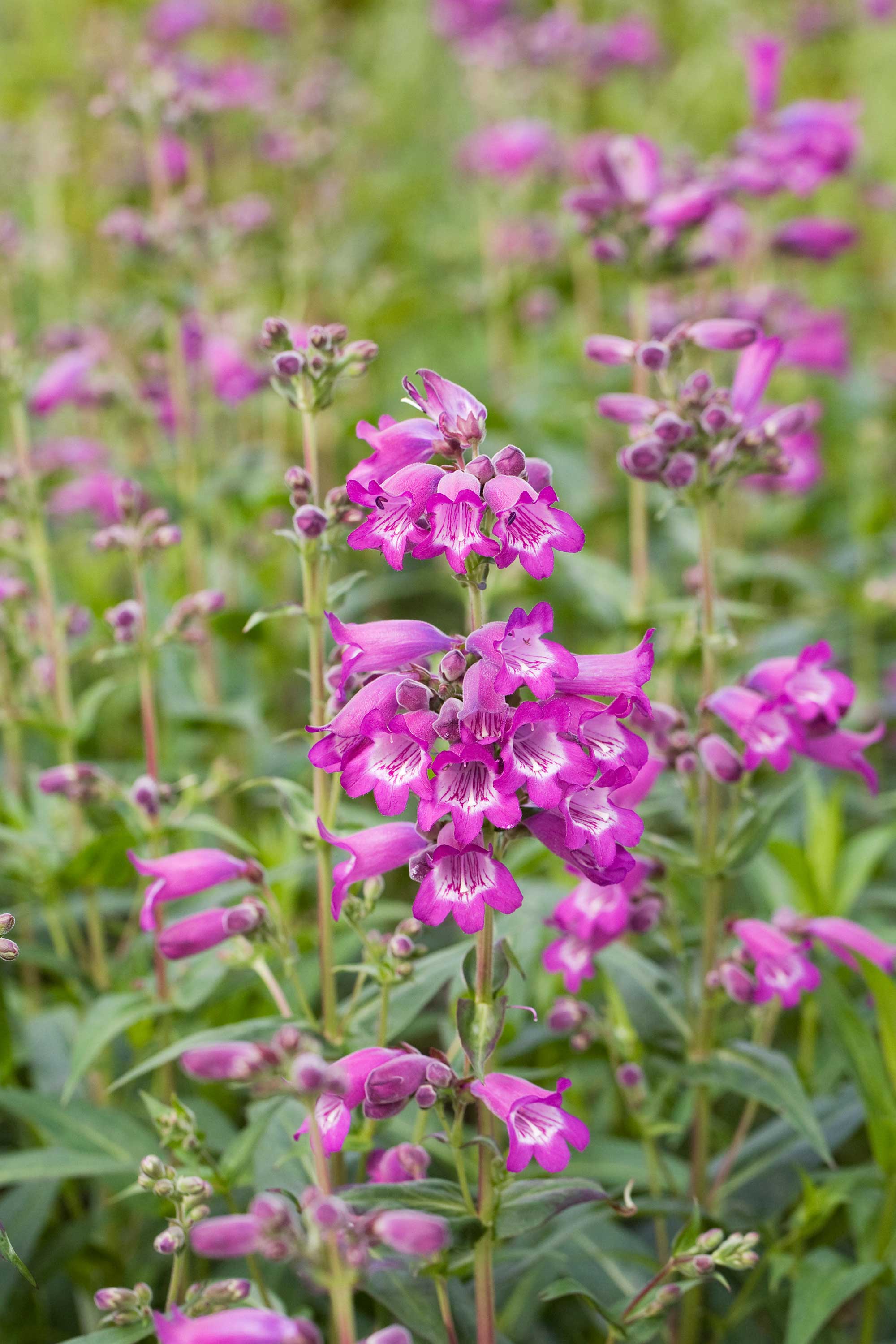
Penstemons look rather similar to foxgloves due to their bell-shaped blooms, and come in a rich spectrum of colors – from vivid cerise (try 'Garnet') and deep purple to bright white ('Snowstorm). They offer their display throughout summer into early autumn, are relatively low maintenance, and make ideal additions to cottage garden ideas. They're also loved by pollinators.
If you already have some in your garden, they're likely to be holding your interest this month. If you want more for next year, now is a good time to take cuttings from plants. As Lucy Chamberlain for Amateur Gardening advises, all you need to do is snip the tops off non-flowering shoots. You'll need to follow the softwood cuttings approach for propagating penstemons.
If you don't want to wait, you can also plant up new, potted penstemons from a garden center. Get them in as soon as you can, so that they have time to establish before the winter. They favor moist but well-drained soil, positioned in full sun to partial shade. If your garden only has heavy soil, you can add plenty of grit to the border to improve it prior to planting.
It's a good idea to feed them weekly in summer for the best results, and don't forget to mulch them annually.
6. Echinaceas

Echinaceas make a fabulous addition to garden borders with their show-stopping structure and vivid color. They flower from July to September, and their daisy-like blooms are ideal for herbaceous or prairie-style beds.
You can sow these perennials now to plant out next year. Anne Swithinbank for Amateur Gardening explains how:
- Sprinkle seeds thinly across the top of wide, shallow pots and cover lightly with compost.
- Seedlings generally appear by three weeks. When large enough to handle, transplant one per 3.5in pot.
- Move or divide up large clumps in spring with a sharp knife.
If you already have some potted up from last year's sowings, or have bought one from the garden center, you can plant them out all the way up to September. Just ensure you keep them watered during droughts, Anne adds. They like a sunny spot in well-drained soils. Avoid moving them around once they're in.
Echinaceas are another plant that's well-favored by pollinators. Looking for more of the best bee-friendly plants? Our guide has plenty of pretty picks.
7. Forget-me-nots
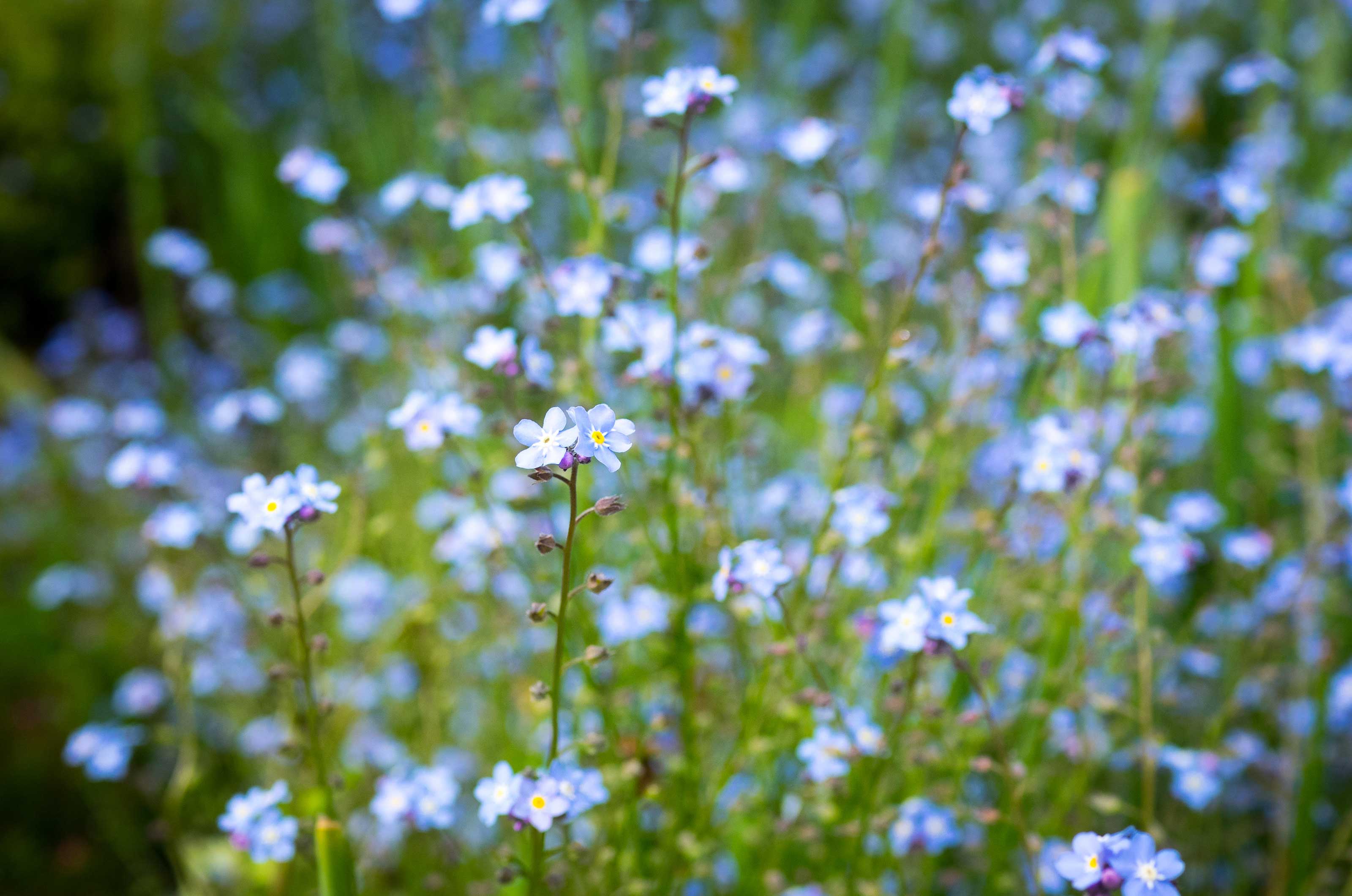
Forget-me-nots, with their delicate yet bright blue flowers, may be small. But that doesn't stop them from being positively charming and therefore a great option for what to plant in July. You can plant their seeds now to enjoy their pretty blooms next spring.
As the team at Thompson & Morgan advise, you can simply mimic the natural process that follows their spring flowering by sprinkling the seeds directly into outdoor soil. This can be done from May all the way up to September. When the seedlings are large enough to handle, you may wish to thin them out to encourage stronger growth. Keep the area moist but not waterlogged.
The best spots for forget-me-nots is somewhere with well-drained soil which has been improved with plenty of organic matter. They thrive in dappled shade, so make lovely additions to shade garden ideas.
8. Wallflowers
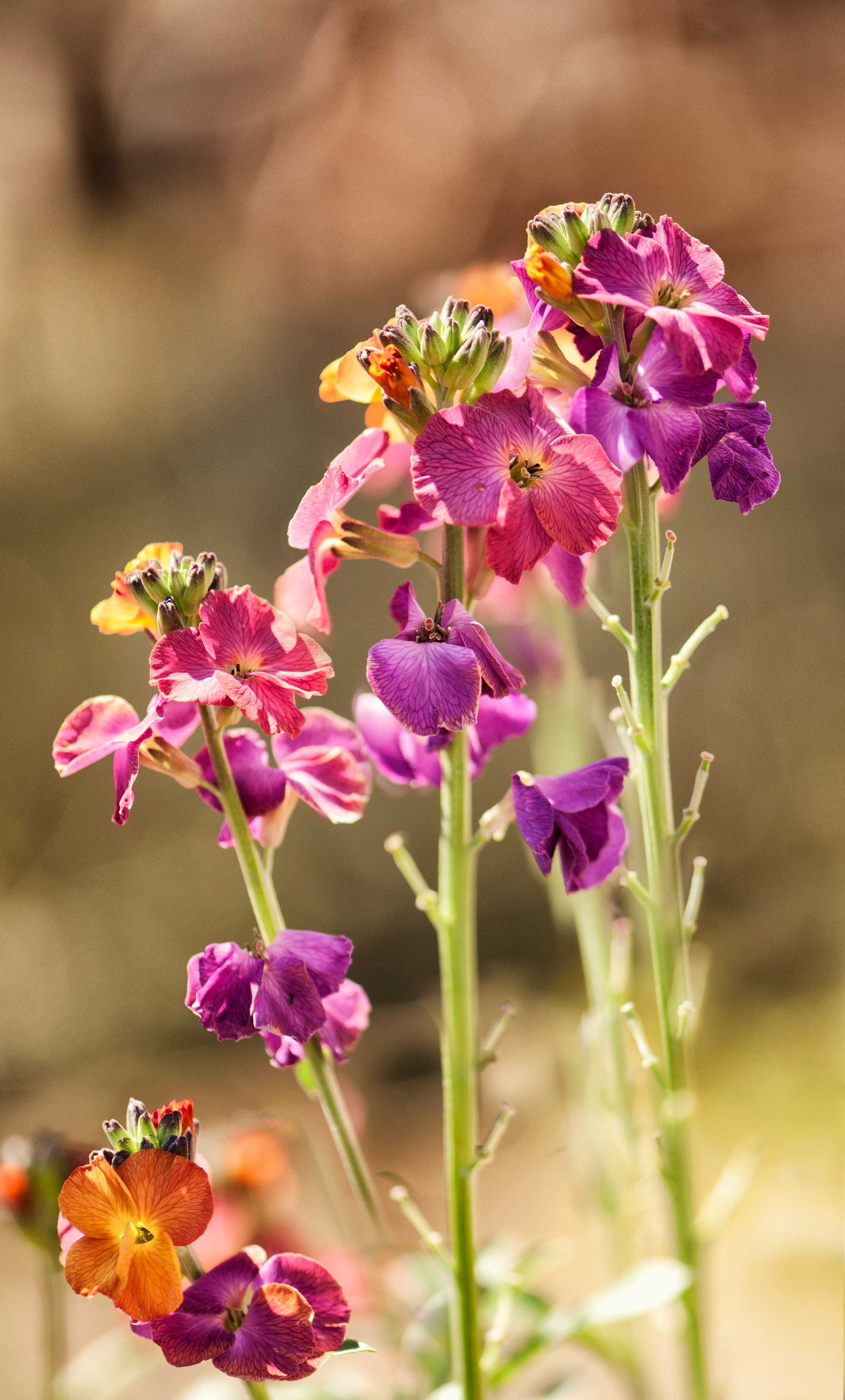
Wallflowers, otherwise known as erysimum, offer glorious spikes of colorful blooms that bees and butterflies adore.
The purple 'Bowles's Mauve' is a well-known favorite, flowering from March right up until early autumn. Alternatively, for blazing red tones, try 'Fire King' – it won't flower for as long as 'Bowles's Mauve' but is certainly a stunning addition to the border.
If you've bought a plant from a garden center, these guidelines will help you add it to your plot:
- Start by watering the plant in its pot thoroughly.
- Pick a sunny spot with well-drained, moderately fertile soil and dig a hole twice the size of the pot. Add grit to the bottom of the hole if your soil is heavy, to improve drainage.
- Add a layer of good multi-purpose compost to the hole, then plant your wallflower, with the top of the root ball level to the top of the hole.
- Fill the remaining gaps in with a mixture of soil and compost.
If you're keen on learning how to grow flowers from seed, you can also plant wallflower seeds now, for flowers next spring. Suttons explains how:
- Sow the seeds in a seedbed away from the final growing spot.
- Make sure the seedbed has a fine tilth for easy germination. This should usually take around 7–14 days. Thin them as they grow, to achieve a spacing of 6in (15cm).
- In fall, transplant the plants into their final spot in your garden. Pick somewhere with sun or partial shade. Space them about 12in (30cm) apart, and pinch out their growing tips to encourage bushiness. Add good-quality organic matter or well-rotted manure to the soil before planting.
- For heavy soils, fork in horticultural grit and seaweed meal too.
9. Delphiniums
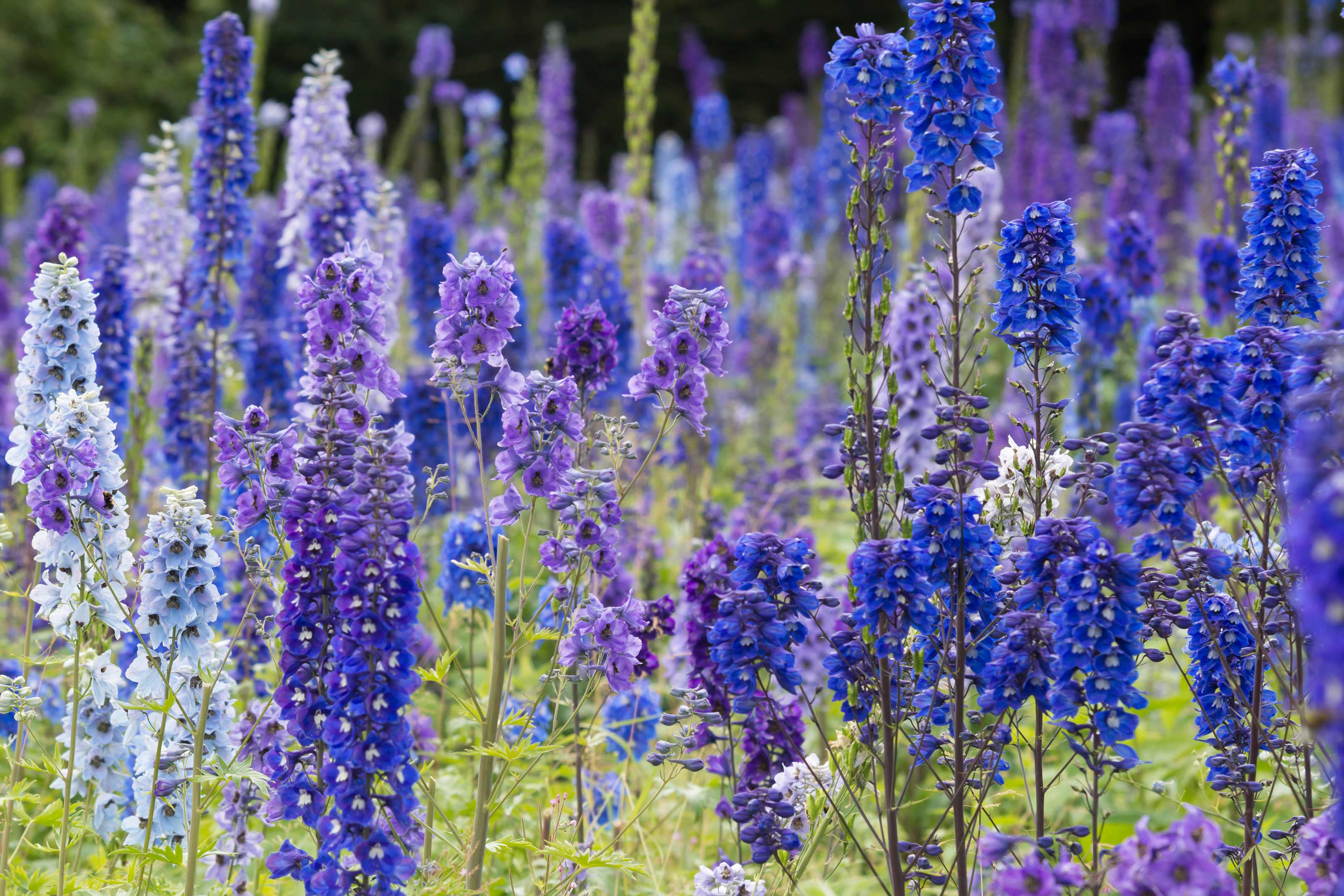
Another perennial which you can start growing from seed now for flowers next year is delphiniums. These showy spikes make ideal additions to the back of billowing borders as they can tower over 6ft tall.
Offering clustered blooms in white, blue, pink and indigo, all types of delphiniums make some of the best cutting garden flowers. You may even have some in your garden right now – their peak blooming season is June to July.
Growing them from seed is much cheaper than buying plants from garden centers, so is the way forward if you're after cheap garden ideas. And now is a good time to do so, directly into the soil outdoors.
Alternatively, you can start them off in trays outdoors or in a seed bed, and then transplant the seedlings in autumn to their final growing position. Our dedicated feature on how to grow delphiniums has more advice should you need it.
10. Foxgloves

Whether you go for white, purple or apricot, foxgloves are a well-loved summer bloomer. A cottage garden staple, these tall flowers make great additions along a fence or at the back of a flowerbed. And right now is a good time to get sowing your favorite foxglove varieties.
As Tamsin Hope Thomson for Amateur Gardening says, these plants are self-seeders. However, if you want a little more control over where new plants end up, you can cut down the flower spike before the seeds are released, then shake it to catch them. You can collect and sow these seeds from now up until August.
'For the best results, sow in small pots and keep under cover in a coldframe,' she says. You can also overwinter them in a frost-free greenhouse. Either way, they should be ready to plant out the following April.
A top tip is to not cover them in soil when you sow them. Instead, lightly press them in, as the seeds need light to germinate.
11. Hollyhocks
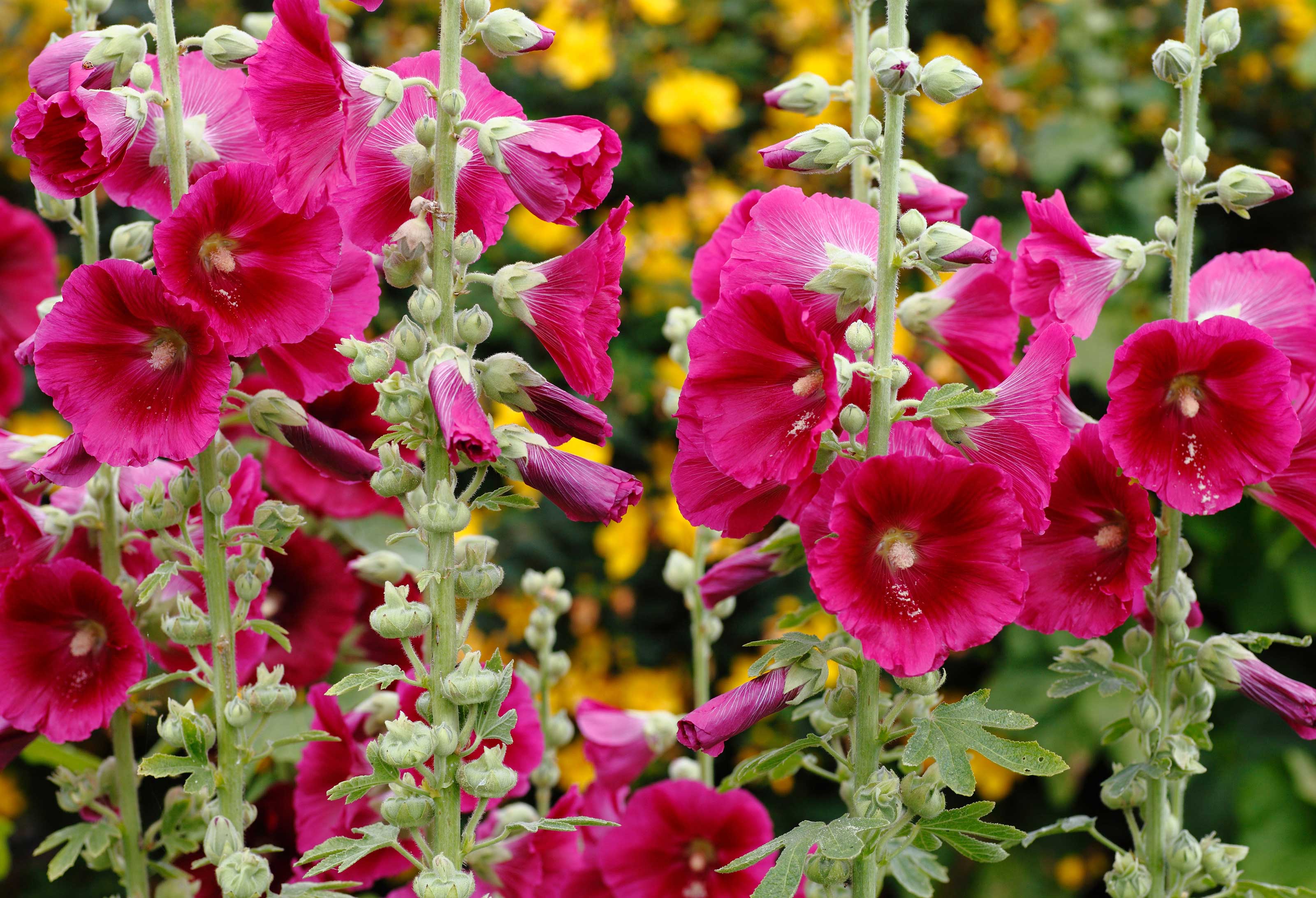
'Hollyhocks are known as the "backbone of the garden" for a reason,' says Ruth Hayes of Amateur Gardening. 'Usually standing at least 3ft tall, they tower over other summer flowers adding height and colorful definition.'
They're one of the best cottage garden plants – try 'Halo Apricot' for dusky pink blooms, or 'O'Hara' for red pom-pom ruffles. Or, for modern garden ideas, why not opt for 'Black Knight' with its striking, glossy, inky-hued petals?
If you're wondering what to plant in July, then these make a good contender. You can sow the seeds now, ready to be planted out when they're large enough in autumn.
Although they are hardy perennials, it's best to use cloches to protect plants from winter weather, adds Ruth.
12. Aquilegias
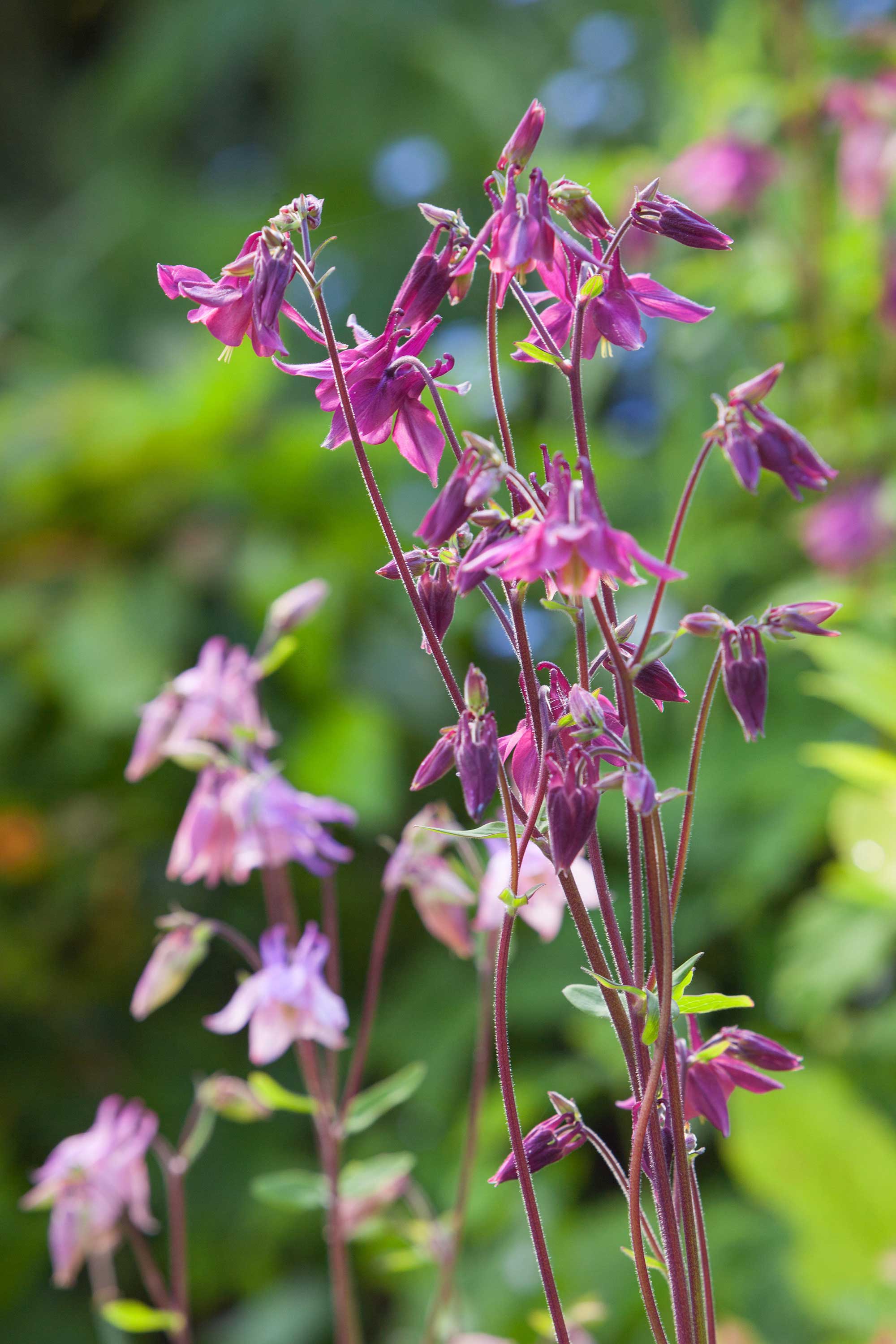
From the showy yellow-white and red 'Crimson Star' and the opulent spikes of 'Black Barlow' to the gentle pastel shades of 'Winky Rose', aquilegia is an early-summer flower which offers all sorts of stunning looks.
As Tamsin Hope Thomson for Amateur Gardening explains, they are prolific self-seeders. And just like with foxgloves, you can collect up the seeds before they disperse (once the seed heads have turned brown), to sow them straight away in trays of compost. Once they have germinated, thin them out and then, when large enough to handle, pot them on individually in a coldframe. Plant them out in autumn, 12in (30cm) apart.
Alternatively, keep the seeds in labelled paper envelopes to plant in March. New plants probably won't look identical to the parents, Tamsin adds.
More top tips for growing flowers in July
It's good to know what to plant in July to get ahead, but don't forget to keep maintaining the blooms you already have, too. There are a few simple tasks that will keep your blooms looking glorious:
- To encourage longer flowering, deadhead bedding plants and repeat-flowering perennials.
- Taller flowers such as lupins and delphiniums may need additional supports.
- Feeding and mulching borders and containers is advised, as is keeping them well-watered in periods of drought.
- Watch out for aphids – you can learn how to get rid of aphids in our handy guide.
- Some spring-flowering shrubs will need pruning now, such as lilacs, flowering quince, and forsythia.

Can you plant bulbs in July?
You may associate flowering bulbs with spring. Of course, there are plenty on offer then, from show-stopping tulips to cheery daffodils. However, there are a good few varieties which will flower in the fall, and these can be planted in July.
Varieties include nerines, autumn crocuses, Cyclamen hederifolium, and the beautiful Gladiolus murielae. Our guide to planting bulbs is full of practical tips.

The garden was always a big part of Holly's life growing up, as was the surrounding New Forest where she lived. Her appreciation for the great outdoors has only grown since then. She's been an allotment keeper, a professional gardener, and a botanical illustrator – plants are her passion.
- Ruth HayesGardening editor, Amateur Gardening magazine
